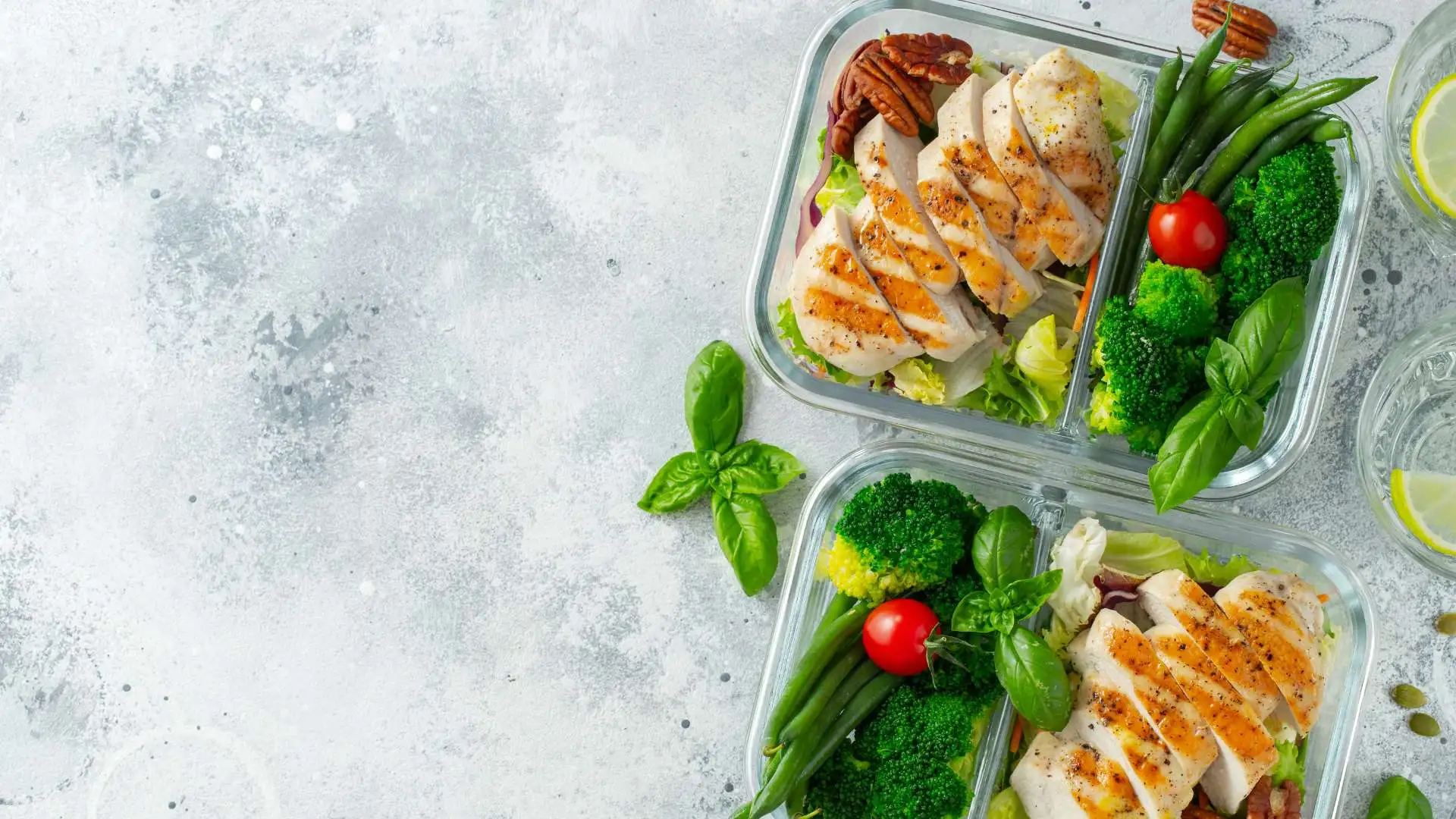Table of Contents
$10 Challenge: Why Cook on a Budget?
Feeding yourself on just $10 a week might sound impossible in today’s economy, but it can be done with careful planning, smart shopping, and creativity. Whether navigating a tight budget, saving for a bigger goal, or just challenging yourself to cut costs, learning to cook on a limited budget can be an empowering and eye-opening experience.
This guide will show you how to stretch every dollar, prioritize nutrition, and make satisfying meals without relying on fast or instant noodles. Even when money is tight, you’ll discover practical eating strategies—from pantry staples and bulk buying to simple, budget-friendly recipes.
The Reality of Food Costs in America
During the recession, food prices soared in America, squeezing household budgets. Recent data reveal that the average American household spends more than $1,000 per month on groceries.. This level of payment is just not affordable for many people. Well, the most straightforward hack could be this $10 per week cooking challenge, which you can use to slash food costs by as much as 50%—and still have tasty meals!
The Benefits of Cooking at Home (Health, Savings)
Not only is cooking at home easier on the wallet, but it’s also a powerful tool for taking control of your health and diet. You can manage your ingredients, portion sizes, and cooking styles by cooking at home, creating a varied and balanced diet that suits your needs. And let’s face it, home cooking is typically WAY cheaper than eating out or relying on processed convenience foods. This sense of control and empowerment is a key benefit of cooking at home.
Read related blog: How to Get 10 Dollars Fast?
Planning Meals for Maximum Savings
The Power of Meal Planning (Reduce Waste, Save Time & Money)
This is meal planning—the cornerstone of budget cooking! The more specific you can be in your planning, the less likely it is that anything will not get used up and go to waste; plus, meal prep on a grocery budget tends to save time, too. Plan a few nights per week to plan your meals. Try to choose ingredients that can be used across different dishes so you get full use out of them.
How to Build a Budget-Friendly Grocery List with Staples
Begin with rice, beans, pasta, and eggs, the workhorses of your larder. Some of these ingredients are best used in soups like potatoes, carrots, and lentils—all staples for many a frugal meal. Include whatever is in season; it is cheaper and tastier. Also, remember to check your pantry before shopping to avoid dragging some of the groceries you have already purchased in line.
Read related blog: How to Earn $10 Fast
Pantry Staples: Foundation for $10 Meals
Essential Pantry Items for Budget Cooking (Beans, Rice, Pasta)
A well-stocked pantry is crucial for budget cooking. Focus on items like:
- Dried beans and lentils
- Rice (brown and white)
- Pasta (various shapes)
- Canned tomatoes
- Flour
- Cooking oil
These staples are affordable, have a long shelf life, and can be used in countless recipes.
Pantry Staples with Multiple Uses
Identify ingredients that serve more than one function. Oats, for example, can be used at breakfast, as a binder in meatloaf, or to bulk up smoothies. Despite a short shelf life, ground canned tomatoes are the perfect choice for pasta sauce or, ideally, in something like soup. So long as you choose ingredients that work well in various situations, versatility is your friend.
Stocking Up When Prices Are Low: Smart Buying Strategies
Non-perishable sale items: Watch for sales, and when they hit, stock up. Most stores have seasonal sales cycles—figure out how they work and when to shop. The downside is that perishables will go bad, so watch out not to overbuy them. The first week’s waste can eat into your budget fast.
Read related blog: How to Earn an Extra $200 a Week
Stretching Your Dollar at the Grocery Store
Understand Unit Pricing and Cost Per Serving
Remember—package sizes can be deceiving. Always compare the unit prices for the best savings! Unit pricing is the cost of an item per unit of measure, such as per ounce or pound. For instance, a 10-lb bag of rice is likely cheaper per ounce than a 2-lb one. Likewise, when studying various food choices, you will want to consider the cost per serving. The cost per serving is the total cost of a recipe divided by the number of servings it makes. This way, you can get the most value for your money.
Embrace Generic Brands and Store Labels
Most generic and store-brand products compete more than adequately with name brands at a fraction of the price. For example, store-brand pasta, canned vegetables, and spices are often just as good as their more expensive counterparts. Try these, and some of them taste better than regular lunches, to boot!
The Art of Meal Planning Around Discounted Produce
This will ensure that you base your meals on what is cheap in the produce section. Most stores have sales on fruits and vegetables that are currently in season (or about to hit their sell-before date), and on those prices.
Meal planning around discounted produce means planning your meals based on what’s on sale or in season. For example, if apples are on sale, you can make apple crisp for dessert. If broccoli is in season, make a broccoli and cheese casserole. You can easily combine these to make healthy, cheap meals.
Read related blog: How to Get $10 Instantly
Mastering the Art of Frugal Cooking Techniques
Leftovers for Budget-Friendly Meals
Use leftovers to make your budget go further. Make salads in bulk or cook large pots of soup, stews, or casseroles that can be consumed for more than one meal. Frittatas and stir-fries with leftover veggies or fried rice.
Make preserves so spontaneous soups happen in just minutes (especially when served over last night’s still oven-hot biscuits). Create grateful desserts like old-fashioned puddings from extra-cooked basmati long grain or flavored risotto. This resourcefulness and creativity in the kitchen can bring a sense of accomplishment and satisfaction.
One-pot meals and Sheet Pan Dinners
Both one-pot meals and sheet pan dinners are not just convenient, but they’re also the shit for you when trying to eat on a budget. Here, they use fewer ingredients and create less waste. Prepare dishes like chicken and rice skillet, vegetable and bean soup, or roasted sausage with potatoes and carrots.
A Week’s Worth of Delicious Meals for Under $10
Meal Plans on a $10 Budget (Breakfast, Lunch, Dinner)
Here’s a sample meal plan for a week on a $10 budget:
Breakfast
- Banana + Toast (with optional peanut butter or oil drizzle)
- Scrambled eggs on toast (1–2 eggs per serving)
- Oatmeal (if included in budget) with sliced banana
Lunch
- Rice + Lentil Stew (Cook lentils with carrots, cabbage, and diced tomatoes for a hearty, filling meal. Batch cook for multiple servings.)
- Bean & Veggie Sandwich (Mash canned beans with seasoning and shredded cabbage/carrots on bread.)
- Fried Rice with Veggies + Egg (Use leftover rice, veggies, and a fried egg.)
Dinner
- Cabbage & Carrot Stir-Fry with Rice
- Lentil Soup with Toast (Use any remaining carrots/cabbage, lentils, and tomatoes.)
- Rice, Beans & Fried Egg Bowl (Simple, protein-packed, and filling)
- This plan utilizes affordable staples while incorporating fruits and vegetables for balanced nutrition.
Read related blog: Eco-Friendly Shopping: Sustainable Grocery Deals
Building a Sustainable Budget Cooking Lifestyle
Avoid Impulse Purchases and Stick to Your Grocery List
Compulsive buying can wreck your budget in no time! Craft a shopping list and stick to it. Do not go shopping while feeling hungry, as it might cause overspending.
Importance of Food Storage and Preventing Spoilage
Food sanitation is essential in preventing food waste. Get tips for storing various fruits and vegetables to keep their lifespans as long as possible. Store your dry goods in an airtight container. Leftovers can be frozen if you do not eat them within a few days.
Conclusion
A $10 weekly cooking budget will be complex, but doable with strategic preparation, methodical shopping, and creative use of ingredients. Through affordable ingredients, frugal cooking methods, and ensuring nothing goes to waste in your pantry, you can prepare nutritious but filling and inexpensive meals that will not crush you financially. Just One Last Thing: The skills you learn through a challenge like this will last you for years.
Also, Beem’s Budget planner can help you plan and save your money like an expert with on-point financial insights. Download the app now!
FAQs on How to Cook with $10 a Week
Can you cook healthy meals for $10 a week?
Well, yes, it is possible—with some excellent planning and a diet with balanced starches that you can rely on. More expensive items like meat and processed foods must be used sparingly, freeing up funds for higher-eating activities like whole grains, legumes, and seasonal fruit/veg.
What are some essential kitchen tools for budget cooking?
Necessary cooking essentials are a big pot for soups and stews, a skillet for stove-top dishes, a cookie sheet to roast your vegetables on, or even to dice meat thinly upon if you need to (since the knife is also being used), sharp knives, and leftover storage containers! A slow or pressure cooker are other tools that can help you prepare your meals on a budget.
How can I find cheap and healthy recipes for my budget?
Try to find recipes that involve beans, rice, and seasonal veggies. Numerous websites and cookbooks are dedicated to budget-friendly cooking. Look out for dishes that lend themselves well to adaptation, meaning they will keep their flavor and texture even if you replace specific components or omit the more expensive ingredients (predominantly meat).















































